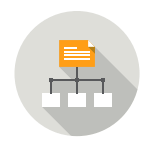Introduction
In the digital age, where attention spans are dwindling and competition is fierce, ensuring your website stands out is crucial. One of the most effective ways to enhance your online presence is through search engine optimization (SEO). While many people focus on text content, optimizing images for SEO can significantly improve your site's visibility in search results. This article will dive deep into the world of image optimization, exploring best practices you should follow to ensure your images contribute positively to your SEO efforts.

Understanding Image Optimization
What Is Image Optimization?
Image optimization is the process of delivering high-quality images in a format that allows for fast loading times without sacrificing visual appeal. This involves resizing images, compressing them, and implementing proper file formats while ensuring they still provide value to users and search engines alike.
Why Is Image Optimization Important for SEO?
Images play a vital role in enhancing user experience. They attract attention, convey messages quickly, and can even improve engagement rates. However, poorly optimized images can slow down your website's loading speed, negatively impacting user experience and ultimately affecting your rankings on search engines like Google.

The Role of Images in Search Engine Results
How Do Search Engines Understand Images?
Search engines use various algorithms to crawl websites and understand their content. While they primarily rely on text-based content to determine relevance, they also take into account image attributes such as alt text and file names. Optimizing these elements helps search engines index your images effectively.
The Impact of Image Search on Traffic
Did you know that a significant portion of web traffic comes from image searches? Google Images serves billions of searches every month. By optimizing your images correctly, you can tap into this potential traffic source and draw new visitors to your website.
Best Practices for Optimizing Images
Choosing the Right File Formats
What Are the Best File Formats for Web Images?
When it comes to image formats suitable for web use, you'll typically encounter several types:
- JPEG: Ideal for photographs due to its compression capabilities. PNG: Best suited for graphics requiring transparency or sharper detail. GIF: Perfect for simple animations or short video clips. WebP: A modern format that provides superior compression.
Each format has its pros and cons; selecting the right one depends on your specific needs.
Resizing Images Appropriately
How to Determine the Right Size for Your Images?
Before uploading an image, consider its size. Large files can drastically slow down loading times. Aim to resize images according to their display dimensions on the page—there's no need to upload a 3000x2000 pixel image when it will only be displayed at 600x400 pixels.
Compressing Images Effectively
What Tools Can Be Used for Image Compression?
Compression reduces file sizes without significant loss in quality. Various tools help with this task:
- TinyPNG: Great for PNG and JPEG compression. ImageOptim: A powerful tool for Mac users. Kraken.io: Offers both lossless and lossy compression options.
Using these tools ensures that your website remains fast while maintaining visual appeal.
Utilizing Alt Text Strategically
What Is Alt Text?
Alt text (alternative text) describes an image's content when it cannot be viewed by users or crawled by search engines. It's essential not just for SEO but also accessibility purposes—screen readers utilize it to describe images to visually impaired users.
How to Write Effective Alt Text?
When writing alt text, keep it concise yet descriptive:
Use relevant keywords naturally. Avoid keyword stuffing. Describe the image's function or context if applicable.For example: Instead of "dog," use "Golden Retriever playing fetch in a park."
Implementing Descriptive File Names
Why Are File Names Important?
The file name of an image contributes significantly to SEO. A descriptive file name provides context about the image’s content:
Instead of using “IMG_1234.jpg,” rename it to “golden-retriever-fetch-park.jpg.”
Best Practices for Naming Files
Use hyphens (-) instead of underscores (_) as separators. Keep filenames short but descriptive. Incorporate relevant keywords when appropriate.Creating Responsive Images
What Are Responsive Images?
Responsive images adapt their size based on different screen resolutions and devices—ensuring optimal viewing experiences across desktops, tablets, and mobile phones.
How Can You Implement Responsive Images?
Use HTML attributes like srcset and sizes within tags:

This approach lets browsers choose the most suitable image version depending on device size.
Using Structured Data Markup
What Is Structured Data Markup?
Structured data helps search engines better understand your content by providing additional context through standardized formatting—like schema.org markup.
How Can It Benefit Your Images?
By using structured data specifically designed for images (e.g., ImageObject), you increase the chances of appearing in rich snippets or carousels in search results—driving more traffic back to your site!

Leveraging Social Media Sharing
How Do Social Media Platforms Affect Image Visibility?
Images shared on platforms like Instagram or Pinterest often drive substantial traffic back to their original sources—especially when optimized properly with relevant tags and descriptions.
Tips For Optimizing Social Media Images
Use platform-specific dimensions (e.g., square for Instagram). Include watermarks if necessary but maintain aesthetics. Create compelling captions that encourage sharing.Implementing Lazy Loading Techniques
What Is Lazy Loading?
Lazy loading defers loading off-screen images until users scroll down the page—a technique that enhances performance by reducing initial load time.
How Do You Implement Lazy Loading?
You can easily implement lazy loading using native HTML attributes like loading="lazy":

This ensures that non-visible images do not hinder initial page loads!
Testing Your Image Optimization Efforts
Tools To Analyze Image Performance
To gauge how https://www.bing.com/maps?ss=ypid.YN873x2583449911153075722&cp=36.087968%7E-87.009702&lvl=16.0 well you've optimized your images, employ tools like:
- Google PageSpeed Insights GTmetrix WebPageTest
These platforms will provide insights into load times related specifically to image sizes!
The Importance of Mobile Optimization in SEO
Why Focus On Mobile Users?
With over half of global web traffic coming from mobile devices today, ensuring optimized imagery tailored toward mobile viewing is critical!
Tips For Mobile Image Optimization
Ensure quick-loading formats suited for mobile connectivity (consider WebP). Test responsiveness across multiple devices before going live. Utilize AMP (Accelerated Mobile Pages) where feasible!FAQs About Optimizing Images for SEO
Q1: Can I use any type of image format?
A1: No! The ideal formats include JPEGs for photos due to their smaller sizes while PNGs work better with graphics requiring transparency.
Q2: Is alt text really necessary?
A2: Absolutely! Alt text improves accessibility while helping search engines accurately index your imagery which benefits overall SEO efforts!
Q3: Does resizing my images affect quality?
A3: Resizing shouldn't compromise quality if done correctly—always maintain proportions during resizing processes!
Q4: What's more important - file names or alt text?
A4: Both are crucial! While file names help with initial indexing by search engines; alt texts enhance user experience via descriptions when needed!
Q5: Should I optimize all images equally?
A5: Not necessarily! Prioritize optimizing key visuals such as hero banners and product photos since they carry more weight regarding conversions than smaller decorative ones!
Q6: Does lazy loading impact SEO negatively?
A6: No! When implemented correctly through standard HTML attributes or JavaScript libraries; lazy loading improves overall performance which positively influences ranking factors over time!
Conclusion
Optimizing images isn’t just an afterthought—it’s an integral part of any robust SEO strategy! By following best practices outlined here—including choosing proper formats, resizing appropriately, utilizing alt texts effectively—you’re setting yourself up for success both in terms of user experience AND visibility within SERPs!
Remember—the way we present our visuals impacts how we connect with audiences online; don’t overlook these essential tactics when crafting engaging web experiences! So gear up folks—it’s time we start treating those stunning graphics right! After all—a picture speaks a thousand words—but only if it's presented well enough so everyone can see it!